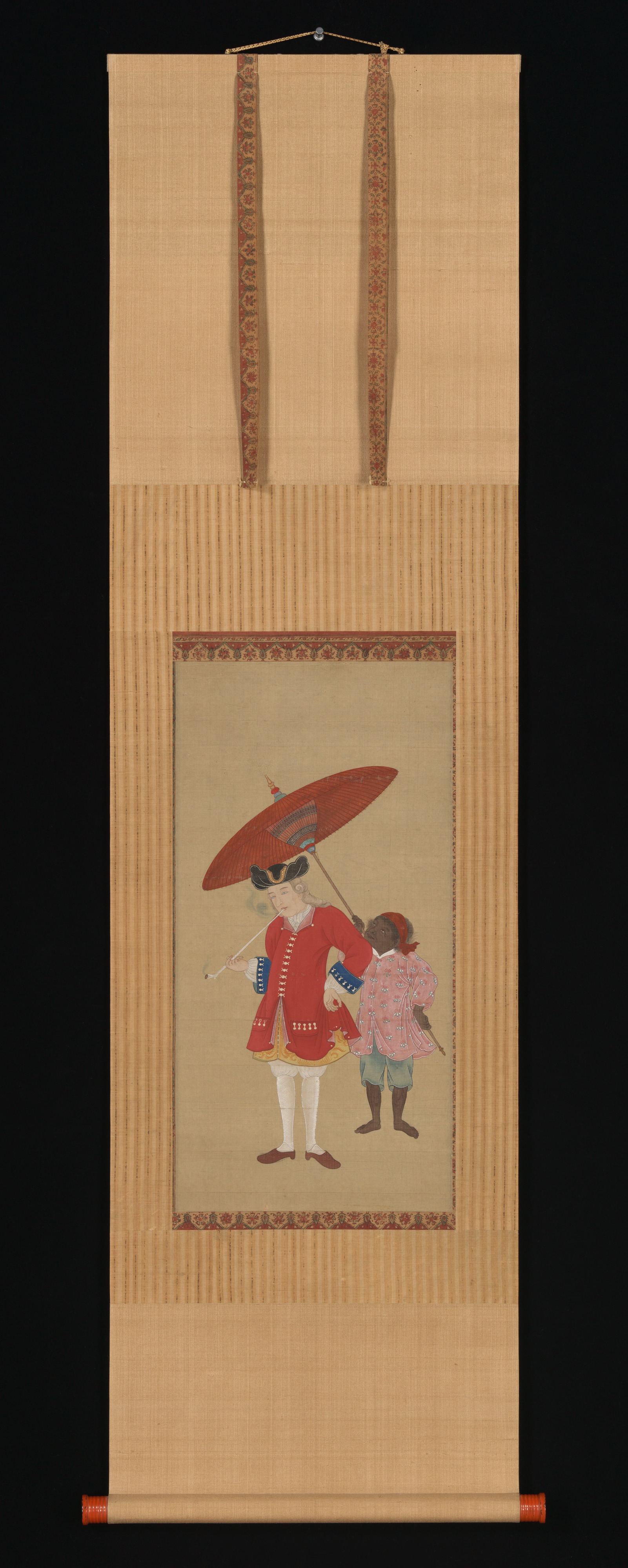Dutchman with a Servant
Attributed to Kawahara Keiga Japanese
Not on view
This is painting was inspired by an early print of the 1750s entitled “Hollander” (Orandajin no zu) that was produced by the publisher Hariya in Nagasaki, the only port foreigners were allowed to enter Japan for most of the Edo period. That print, which became a template for countless subsequent prints and paintings of Dutch figures, identifies the dandily dressed figure with bright blue eyes and long, curly blond hair as the kapitan, referring to the opperhoofd, the manager of the Dutch factory on the island of Deshima (off the shore of Nagasaki). He puffs on a long clay pipe, reminding us that tobacco and its consumption was an insidious import from Europe in the mid to late sixteenth century, and then was grown locally. The opperhoofd wears tight leggings and an overly fancy long jacket of Dutch colonialists, manufactured in Asia by local tailors. His Javanese servant holding the parasol in the early print is referred to as a kurobō, a derogatory term used for black slaves abducted in the East Indies. Though not signed, the work is in the meticulous but stiff Western style of painting associated with Kawahara Keiga, the most prolific portraitist of the Dutch community in Deshima.
Due to rights restrictions, this image cannot be enlarged, viewed at full screen, or downloaded.
This artwork is meant to be viewed from right to left. Scroll left to view more.



